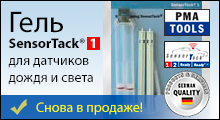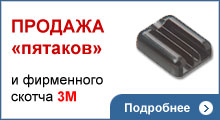| АВТОСТЕКЛА: продажа автостекол, доставка и установка автостекол в Москве |
в мире автостекол
| Email для связи: |
НОВЫЕ ПОСТУПЛЕНИЯ Комплект из 3-х съемников для удаления пластиковых клипс, пистонов и элементов обшивки автомобиля 
1 200 руб.
СПЕЦ. ПРЕДЛОЖЕНИЕ Приспособление для одновременной двухсторонней обработки острых кромок стекла 
1 800 руб.
А ЗНАЕТЕ ЛИ ВЫ, ЧТО... Существует только один производитель клеев для использования крупными производителями автомобилей - это ESSEX (DOW Corporation).
|
Ford Transit Connect 20102010 Ford Transit Connect. Vehicle type: Mini-van/service vehicle
NAGS numbers*: Windshield part number DW1815 solar; rear door glass DD11728-29 solar; and back glass DB11730-31 R/L, wiper, and DB11732-33 R/L, wiper, heated
Helpful tools or supplies: Cutout wire for the back glass Watch for: The windshield is rather large for a small vehicle and may require two technicians or a single-set tool. The hood requires the ignition key to open. There are two back glasses on the Transit and two options. The options both include a wiper; the second option has a wiper without a defroster.
*With permission from National Auto Glass Specifications. Call NAGS at 800/551-4012 or visit http://glass.mitchell.com/.
A. Windshield
Preparation
1. Cover the front seats, floorboards, dash and steering wheel with a clean drop cloth or disposable plastic covers. Note: Always wear eye and hand protection when working with glass. Make sure you have the right glass and moldings and that the urethane systems you are about to use are current. Windshield part number is DW1815.
2. Drape the fender with a fender cover and tape up any vulnerable areas on the vehicle to protect against possible damage. Tape up the defroster vents to prevent debris from falling into the openings. 3. Remove the rearview mirror; it is a peel-off style similar to past Ford vehicles. Grasp the base and peel downwards, or tap it up and off the pad using a plastic stick and hammer. 4. The hood on the Transit requires the ignition key to open. There is no release on the inside of the vehicle. Behind the Ford logo on the grill is a key slot. Swivel the logo plate up and to the left. Insert the key, turn it left and lift the hood while turning the key to the right.
  5. Remove the windshield-wiper nut covers.
6. Remove the windshield-wiper nuts using a15-millimeter wrench or socket. Move the wiper arm in an up-and-down motion to break it loose from the post, or use a wiper-puller. Caution: Wipers can sometimes be hard to remove. To avoid stressing the post, use a wiper-puller. 7. Remove the cowl panel by removing the 13 Phillips screws: seven on the fascia and six on the leading edge of the panel. Once the screws are removed, the panel can easily be removed and set in a safe place.
  8. The top and side moldings are a wraparound molding that will need to be replaced with the glass. If the moldings do not pull out cleanly, cut the flap off the edge of the molding and cut out as normal. Note: Before beginning windshield removal, verify the new windshield is the correct one and the urethanes and primers are current. Never use outdated products as this could jeopardize the structural integrity of the vehicle and the safety of its passengers.  Removal
9. Make sure cutting blades are sufficiently sharp. 10. Before cutting out the windshield, remove contaminants from the glass and pinchweld to prevent contact with the urethane. 11. Use the cutting tools of your choice to remove the glass from the adhesive bead. The cutout will be relatively easy; there is more than enough room to use a cold knife or power tool. If you use a power tool, lubricate the cutting area with water. Spray the top and sides; then make your cuts. 12. Take the windshield out of the opening using vacuum cups. Make sure the vacuum cups do not overlap a crack in the glass. Lift the glass and place it on a windshield stand or suitable workstation. Installation
13. After cutting the windshield out, remove contaminants such as dirt, moisture and debris from the pinchweld. Clean the dashboard. 14. Note, the windshield is rather large and may require the help of a second technician or a single-set tool for installation. 15. Dry fit the new glass to the opening. Mark your glass using a grease pencil or retention molding tape. 16. Attach the moldings to the glass edge. 17. Place your vacuum cups on the new windshield in the appropriate location. 18. Set the windshield onto the old urethane. 19. With the windshield resting in the opening, make sure it is in the right spot. 20. Adjust both sides to the correct setting, marking the passenger side, then the driver side. Lift the glass and place it on a windshield stand or suitable workstation. 21. Follow the urethane manufacturer’s recommendations for installation. 22. Clean the inside of the windshield using a urethane manufacturer-recommended product. Do not touch the bonding area of the windshield after cleaning, prepping or priming it. 23. Wear powder-free Nitrile gloves to protect against harsh chemicals. 24. Apply the glass prep and primer following the urethane manufacturer’s recommendations. 25. Using the tool of your choice, remove the original urethane bead, leaving 1 millimeter to 2 mm of urethane on the pinchweld. Make sure there are no contaminants and do not touch the pinchweld after you have prepped the area. 26. Apply the pinchweld primer only to the areas where needed, and follow the urethane manufacturer’s recommendations. Allow preps and primers to dry as recommended by the urethane manufacturer. 27. Apply a triangular bead of urethane to the same path as the freshly cut urethane on the pinchweld. Before cutting your V-notch, cut the tip off of your nozzle with a nozzle-cutter. With the cut nozzle, measure to the top of the roofline, and at 1/16-inch higher than the roofline, make a mark on the nozzle with a pen or marker. Notch the nozzle up to the marked line; this will give you the appropriate triangular bead. 28. Lift the windshield from the windshield stand or workstation using vacuum cups. Set the windshield on the urethane at the mark you made during your dry fit. Lower the driver’s side of the windshield onto the urethane and line it up with the dry-fit mark; it is now in place. 29. The windshield is now ready to be decked. Press firmly to ensure a good seal. 30. Before re-installing the parts, check for leaks. Use a leak detector to go over the perimeter of the windshield. If you find a leak, apply more pressure or add more urethane to the spot and ensure that the glass makes contact with the wet urethane. 31. Re-install the removed parts in reverse order. 32. Allow the urethane to cure according to the urethane manufacturer’s recommended cure time before returning the vehicle to the customer. Warning: Disregarding the safe drive-away time that your urethane manufacturer recommends could jeopardize the structural integrity of the vehicle and the safety of its passengers. 33. You have completed the removal and replacement of the windshield. B. Rear door glass
Removal
1. Make sure that you have the right glass. Rear door glass part number is DD11728-29. The glass in the two back doors is stationary, bonded in place and does not roll up or down. If the glass is fractured, the strip out will be relatively easy with little or no damage to the paint. If the goal is to salvage the glass, the cutout will be problematic due to very close tolerances to the vehicle’s body.  2. The glass has exposed edges and is very close to the pinchweld wall, so care must be taken when cutting out the glass. Use the cutting tools of your choice to remove the glass from the adhesive bead. If you use a power tool, lubricate the cutting area with water. Spray the top and sides; then make your cuts. Installation
3. After cutting the door glass out, remove contaminants such as dirt, moisture and debris from the pinchweld. 4. Dry fit the new glass to the opening. Mark your glass using a grease pencil or retention molding tape. 5. Place your vacuum cups on the new door glass in the appropriate location. 6. Set the glass onto the old urethane. 7. With the door glass resting in the opening, make sure it is in the right spot. 8. Adjust both sides to the correct setting. Lift the glass and place it on a windshield stand or suitable workstation. 9. Follow the urethane manufacturer’s recommendations for installation. 10. Clean the inside of the door glass using a urethane manufacturer-recommended product. Do not touch the bonding area of the door glass after cleaning, prepping or priming it. 11. Wear powder-free Nitrile gloves to protect against harsh chemicals. 12. Apply the glass prep and primer following the urethane manufacturer’s recommendations. 13. Using the tool of your choice, remove the original urethane bead, leaving 1 millimeter to 2 mm of urethane on the pinchweld. Make sure there are no contaminants and do not touch the pinchweld after you have prepped the area. 14. Apply the pinchweld primer only to the areas where needed, and follow the urethane manufacturer’s recommendations. Allow preps and primers to dry as recommended by the urethane manufacturer. 15. Apply a triangular bead of urethane to the same path as the freshly cut urethane on the pinchweld. Before cutting your V-notch, cut the tip off of your nozzle with a nozzle-cutter. With the cut nozzle, measure to the top of the roofline, and at 1/16-inch higher than the roofline, make a mark on the nozzle with a pen or marker. Notch the nozzle up to the marked line; this will give you the appropriate triangular bead. 16. Lift the door glass from the windshield stand or workstation using vacuum cups. Set the glass on the urethane at the mark you made during your dry fit. Lower the glass onto the urethane and line it up with the dry-fit mark; it is now in place. 17. The door glass is now ready to be decked. Press firmly to ensure a good seal. 18. Before re-installing the parts, check for leaks. Use a leak detector to go over the perimeter of the door glass. If you find a leak, apply more pressure or add more urethane to the spot and ensure that the glass makes contact with the wet urethane. 19. Re-install the removed parts in reverse order. 20. Allow the urethane to cure according to the urethane manufacturer’s recommended cure time before returning the vehicle to the customer. Warning: Disregarding the safe drive-away time that your urethane manufacturer recommends could jeopardize the structural integrity of the vehicle and the safety of its passengers. 31. You have completed the removal and replacement of the rear door glass. C. Back glass
Removal 1. Make sure you have the right glass. Back glass part numbers are DB11730-31 and DB11732-33. There are two back glasses on the Transit and two options. The options both include a wiper; the second option has a wiper without a defroster.  2. All edges of the glass parts are exposed with no moldings. There is a hole for the wipers. 3. Swivel back the wiper-nut cap and remove the 13-millimeter nut using a deep well socket. Be careful not to damage the washer nozzle that goes through the threaded shaft of the wiper post. Remove the wiper from the wiper post. Retain the grommet that surrounds the post; it does not come with the glass.
  4. Open the door, and disconnect the defroster leads if the vehicle is so equipped. The leads insert into a grommet at the lower edge of the glass opening and connect in the door. Remove the grommet to connect and disconnect the wiring harnesses.  5. If the wiper mechanism must be removed from the door frame, remove the cover by removing the three 10 millimeter fasteners that hold it in place.
 6. The glass is very tight to the vehicle body on the top and bottom. Cutout may be difficult if the goal is to salvage the part. It may be necessary to wire out the top and sides. If wire out is chosen as the removal method, remove the interior trim from the pinchweld before cutout. Installation
7. After cutting the back glass out, remove contaminants such as dirt, moisture and debris from the pinchweld. 8. Dry fit the new glass to the opening. Insert the grommet into the hole in the new back glass. Mark your glass using a grease pencil or retention molding tape. 9. Place your vacuum cups on the new back glass in the appropriate location. 10. Set the back glass onto the old urethane. 11. With the back glass resting in the opening, make sure it is in the right spot. 12. Adjust both sides to the correct setting, marking the passenger side, then the driver side. Lift the glass and place it on a windshield stand or suitable workstation. 13. Follow the urethane manufacturer’s recommendations for installation. 14. Clean the inside of the back glass using a urethane manufacturer-recommended product. Do not touch the bonding area of the back glass after cleaning, prepping or priming it. 15. Wear powder-free Nitrile gloves to protect against harsh chemicals. 16. Apply the glass prep and primer following the urethane manufacturer’s recommendations. 17. Using the tool of your choice, remove the original urethane bead, leaving 1 millimeter to 2 mm of urethane on the pinchweld. Make sure there are no contaminants and do not touch the pinchweld after you have prepped the area. 18. Apply the pinchweld primer only to the areas where needed, and follow the urethane manufacturer’s recommendations. Allow preps and primers to dry as recommended by the urethane manufacturer. 19. Apply a triangular bead of urethane to the same path as the freshly cut urethane on the pinchweld. Before cutting your V-notch, cut the tip off of your nozzle with a nozzle-cutter. With the cut nozzle, measure to the top of the roofline, and at 1/16-inch higher than the roofline, make a mark on the nozzle with a pen or marker. Notch the nozzle up to the marked line; this will give you the appropriate triangular bead. 20. Lift the back glass from the windshield stand or workstation using vacuum cups. Set the back glass on the urethane at the mark you made during your dry fit. Lower the driver’s side of the back glass onto the urethane and line it up with the dry-fit mark; it is now in place. 21. The back glass is now ready to be decked. Press firmly to ensure a good seal. 22. Before re-installing the parts, check for leaks. Use a leak detector to go over the perimeter of the back glass. If you find a leak, apply more pressure or add more urethane to the spot and ensure that the glass makes contact with the wet urethane. 23. Re-install the removed parts in reverse order. 24. Check the operation of the back glass defroster. Carefully close the back glass and check the gaps. 25. Allow the urethane to cure according to the urethane manufacturer’s recommended cure time before returning the vehicle to the customer. Warning: Disregarding the safe drive-away time that your urethane manufacturer recommends could jeopardize the structural integrity of the vehicle and the safety of its passengers. 26. You have completed the removal and replacement of the back glass.
© 2010 By Bob Beranek |






